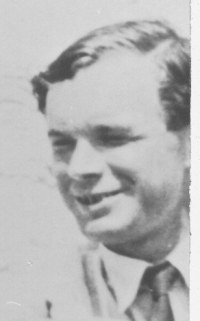|
 Alan
Hodgkin was a research scholar at Cambridge before the war. From
February 1940 to July 1945 he worked on Airborne Interception radar. He
was in the team that invented the Airborne Interception spiral scanning system
enabling the range and direction of a target aircraft to be displayed together
(AI MkVII). Alan
Hodgkin was a research scholar at Cambridge before the war. From
February 1940 to July 1945 he worked on Airborne Interception radar. He
was in the team that invented the Airborne Interception spiral scanning system
enabling the range and direction of a target aircraft to be displayed together
(AI MkVII).
Towards the end of the war he led the team on the development of the
Automatic Gun Laying Turret (AGLT) for the rear defence of bombers. He
also worked on air to air guided weapons. After the war he returned to
Cambridge to undertake research work on the nervous system for which he
received a Nobel Prize in 1963. He was elected President of the Royal
Society in 1970. His wartime work inspired him to write his autobiography Chance
and Design - see below. Prof Sir Alan Lloyd Hodgkin OM FRS
5 February 1914 - 20 December 1998
|